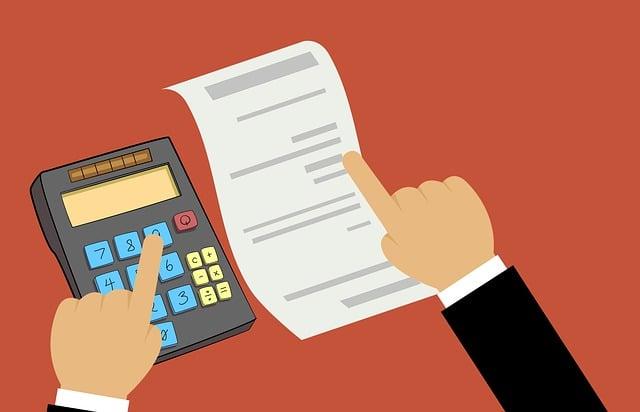Table of Contents
- Understanding the Basics of Personal Finance
- Building a Budget That Works for You
- Exploring Investment Options for Newbies
- Establishing an Emergency Fund and Its Importance
- Navigating Debt Management Strategies for Beginners
- Q&A
- Future Outlook
Understanding the Basics of Personal Finance
Understanding personal finance is essential for anyone looking to establish a secure financial future. Budgeting is the cornerstone of personal finance; it helps individuals track income and expenses, ensuring they live within their means. Start by listing all sources of income alongside your monthly expenditures. Break expenses into fixed (e.g., rent, utilities) and variable categories (e.g., groceries, entertainment). Keeping a clear, categorized budget not only aids in financial planning but also promotes savings and investment opportunities.
Another crucial aspect is saving for emergencies. Unexpected events like medical expenses or job loss can strain finances, so building an emergency fund is imperative. Aim to save at least three to six months’ worth of living expenses. Here are a few tips to get started:
- Set a specific savings goal.
- Automate transfers to a savings account.
- Cut unnecessary expenses to boost savings.
Debt management is equally important in personal finance. Many individuals find themselves overwhelmed by credit card debt or student loans. To tackle this, consider the following strategies:
- Prioritize high-interest debts first.
- Negotiate lower interest rates with creditors.
- Utilize debt repayment techniques, like the snowball or avalanche methods.
Implementing these strategies will not only reduce financial stress but also pave the way for long-term financial stability and wealth accumulation.


Building a Budget That Works for You
Creating a budget that aligns with your lifestyle and financial goals is crucial for managing your money effectively. Begin by assessing your current financial situation. This involves listing all your income sources and tracking your expenses over a month. Break down your expenses into two categories: fixed and variable. Fixed expenses might include rent or mortgage payments, while variable expenses can range from groceries to entertainment. Understanding where your money goes is the first step in building a successful budget.
Once you have a clear picture of your income and expenses, it’s time to set some financial goals. Consider both short-term and long-term goals. Short-term goals could include saving for a vacation or paying off a small debt, while long-term goals might focus on retirement savings or purchasing a home. Prioritizing these goals will help you determine how much money you need to allocate for each objective. Here’s a quick example:
| Financial Goal | Timeframe | Monthly Savings |
|---|---|---|
| Emergency Fund | 6 months | $200 |
| Vacation | 1 year | $150 |
| Retirement | 20 years | $300 |
revisit and adjust your budget regularly. Life changes, and so do your financial needs and goals. Utilizing budgeting tools and apps can simplify this process, helping you keep track of both your expenditures and progress toward your savings goals. Don’t hesitate to seek professional advice if needed; many resources are available to help you stay on track. Focus on habits that foster discipline and consistency, as these are key to successfully managing your finances.


Exploring Investment Options for Newbies
Starting your investment journey can be both exciting and daunting. With a myriad of options available, it’s essential to understand the key avenues to consider as a beginner. Here are some popular investment types that can serve as a solid foundation:
- Stocks: Investing in shares of companies can yield significant returns, especially if you choose high-growth sectors.
- Bonds: These are loans to governments or corporations that pay fixed interest over time, offering more stability compared to stocks.
- Mutual Funds: Pooled investment vehicles that allow you to invest in a diversified portfolio managed by professionals.
- Exchange-Traded Funds (ETFs): Similar to mutual funds but trade on stock exchanges, providing flexibility and diversification.
- Real Estate: Investing in property can offer passive income through rents and property appreciation.
When considering where to put your money, you should evaluate your financial goals and risk tolerance. Different investment types come with varying levels of risk. A simple way to categorize investments is based on their risk versus potential return:
| Investment Type | Risk Level | Potential Return |
|---|---|---|
| Stocks | High | High |
| Bonds | Low to Medium | Low to Medium |
| Mutual Funds | Medium | Medium |
| Real Estate | Medium | Medium to High |
diversification is crucial for those new to investing. Spreading your investments across various assets can help mitigate risks. By investing in a mix of stocks, bonds, and other assets, you can create a balanced portfolio that can weather market fluctuations while still aiming for growth. Remember, the key to building wealth through investing is a combination of informed decisions, patience, and a long-term perspective.


Establishing an Emergency Fund and Its Importance
Creating a robust financial safety net is a cornerstone of smart money management. An emergency fund is essentially a dedicated stash of savings set aside to cover unexpected expenses, such as medical emergencies, car repairs, or job loss. By having this fund in place, you not only gain peace of mind but also avoid falling into debt during unforeseen circumstances. The key is to ensure that this fund is easily accessible, so you can tap into it without hesitation when the need arises.
To build an effective emergency fund, it’s recommended to aim for three to six months’ worth of living expenses. This amount varies based on personal circumstances, including job stability and family size. Here’s a simple breakdown to help you determine your target savings:
| Monthly Expense | 3 Months Savings Goal | 6 Months Savings Goal |
|---|---|---|
| $2,000 | $6,000 | $12,000 |
| $3,500 | $10,500 | $21,000 |
| $5,000 | $15,000 | $30,000 |
Implementing a systematic approach is vital when it comes to saving for emergencies. Here are some actionable strategies to help you kickstart your fund:
- Automate Savings: Set up automatic transfers to your designated savings account each month.
- Cut Unnecessary Expenses: Review your budget and identify areas where you can reduce spending.
- Use Windfalls Wisely: Consider depositing bonuses, tax refunds, or any unexpected money directly into your emergency fund.
Establishing an emergency fund not only fortifies your financial stability but also empowers you to make informed decisions during challenging times. It’s not just a cushion; it’s a vital tool that allows you to navigate life’s uncertainties with confidence.


Navigating Debt Management Strategies for Beginners
Managing debt can feel overwhelming, especially for those just starting on their financial journey. However, understanding your options is the first step to regaining control. Here are some strategies you can explore:
- Budgeting: Create a detailed budget that tracks your income and expenses. This will help you identify unnecessary expenses and allocate more money towards debt repayment.
- Debt Snowball Method: Focus on paying off your smallest debts first while making minimum payments on larger debts. The success you experience will motivate you to tackle larger debts as you progress.
- Debt Avalanche Method: Prioritize paying off debts with the highest interest rates first. This approach saves you the most money in interest payments over time.
In addition to these strategies, it might be beneficial to consider consolidating your debts. This involves combining multiple debts into a single loan, which can result in lower interest rates and more manageable payments. If you opt for this route, here’s a quick comparison:
| Option | Pros | Cons |
|---|---|---|
| Personal Loan | Lower interest rates, fixed payments | May require good credit |
| Balance Transfer Credit Card | Introductory 0% APR, quick application | Fees and limited timeframe |
| Home Equity Loan | Tax-deductible interest, larger amounts | Risk of losing your home |
Ultimately, the key to effective debt management is consistency and planning. Regularly reviewing your financial situation and adjusting your strategies as necessary will help you stay on track. Prioritize building an emergency fund to prevent future debt and consider seeking advice from financial professionals if you find yourself struggling to make progress.
Q&A
Finance for Beginners: Your Essential Q&A Guide
Finance can seem daunting, especially for those just starting out. But with a solid understanding of the basics, anyone can navigate the world of money management with confidence. Below is a collection of frequently asked questions designed to assist beginners in grasping essential financial concepts.Q1: What are the basic concepts I should understand in personal finance?
A: Personal finance involves managing your money effectively to achieve your financial goals. The basics include budgeting, saving, investing, and understanding debt. Learning how to create a budget allows you to track your income and expenses, while saving helps set aside funds for emergencies or future purchases. Investing can grow your money over time, and knowing about debt—such as student loans or credit cards—will help you make informed decisions to maintain financial health.Q2: How do I create a budget?
A: Creating a budget involves identifying your income and expenses. Start by listing all sources of income—like your salary or any side gigs. Then, calculate your fixed expenses (like rent or mortgage payments) and variable expenses (like groceries and entertainment). A popular method is the 50/30/20 rule: allocate 50% of your income to needs, 30% to wants, and 20% to savings or debt repayment. Tools like budgeting apps or spreadsheets can simplify the process!Q3: What is a good savings goal to start with?
A: As a beginner, aiming for a savings goal of three to six months’ worth of living expenses is a strong foundation. This amount acts as an emergency fund, providing a financial cushion for unexpected situations such as job loss or medical emergencies. Start small if necessary; even a few hundred dollars saved can provide some peace of mind.Q4: How can I start investing if I have little money to spare?
A: You can start investing with as little as $50 or even less! Look into online brokers or investment apps that allow fractional shares, enabling you to buy a portion of expensive stocks. Consider starting with low-cost index funds or exchange-traded funds (ETFs) that diversify your investments and minimize risk. Regular contributions, no matter how small, can compound over time and lead to significant growth.Q5: What’s the difference between good debt and bad debt?
A: Good debt is typically associated with investments that will increase in value over time, such as student loans or mortgages. These debts can lead to greater financial stability and wealth. Bad debt, on the other hand, includes high-interest loans—like credit card debt—that can accumulate and become unmanageable without careful oversight. Understanding the difference helps you make informed borrowing decisions.Q6: How can I improve my credit score?
A: Improving your credit score requires consistent and responsible financial habits. Start by paying all your bills on time, keeping your credit utilization below 30%, and checking your credit report regularly for inaccuracies. Avoid opening too many new accounts at once, as each hard inquiry can negatively impact your score. Building a good credit history will take time, but diligent practices will yield results.Q7: What resources can help me learn more about finance?
A: Numerous resources are available to bolster your financial knowledge. Recommended books include “The Total Money Makeover” by Dave Ramsey and “Rich Dad Poor Dad” by Robert Kiyosaki. Online platforms like Coursera or Khan Academy offer free courses on finance basics. Additionally, podcasts and blogs dedicated to personal finance can provide continuous learning opportunities and real-life insights.Q8: How do I set financial goals for the future?
A: Start by envisioning what you want to achieve financially in the short-term (within a year), medium-term (1 to 5 years), and long-term (5 years and beyond). Be specific with your goals, such as saving for a home or retirement. Use the SMART criteria—Make them Specific, Measurable, Achievable, Relevant, and Time-bound—to create a detailed plan and track your progress regularly.By addressing these questions, you’ll take the first step towards a solid financial foundation. Remember, finance is a journey, not a destination, and with patience and dedication, you can achieve your goals.




0 Comments